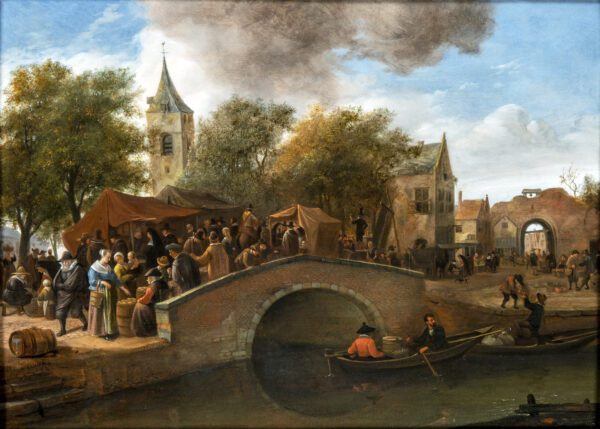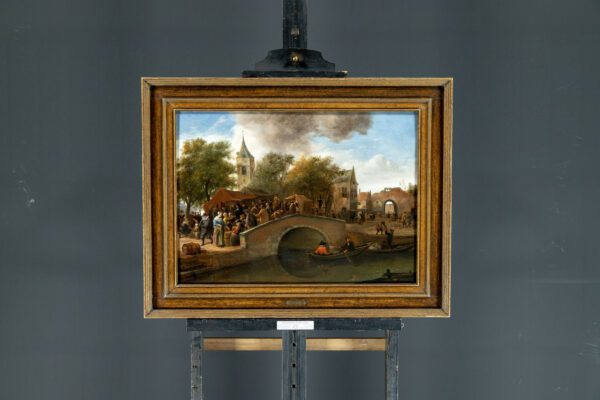“A lively annual Fair and Kermesse, possibly in Warmond, with many figures and two boats”
Oil on panel: 47,5 x 66 cm;
signed indistincly lower left
datable to 1655 – 1660
"*" indicates required fields
Notes
Jan Steen was born in Leiden into a Catholic family of mainly brewers. He was the eldest of eight, became an assistant of the landscape painter Jan van Goyen with whom he worked until 1654 and whose daughter he married. Together they, in turn, would also have eight children. Between 1656 and 1660 Steen lived in Warmond. Among his friends were Gabriel Metsu, with whom he founded the painter’s Guild of Saint Luke in Leiden; and although he lived in The Hague, Delft and Haarlem, he returned to Leiden after his wife’s death in 1670. In 1672, the Year of Disaster, the art market collapsed and Steen opened his own tavern, where Frans van Mieris became one of his drinking companions. Daily life was Jan Steen’s main pictorial theme: theatrical, with a lavish and moralising style.
This composition is similar to two drawings by the artist’s father in law, the famous Old Master artist Jan van Goyen (see H-U. Beck, Vol. I, nos. 384 and 388); they both lived near Warmond and may well have sat together painting and drawing during the annual fair.
In both drawings we can find the same composition with the church on the left and a bustling fair or market upon the bridge. Merchants are working to load or offload their cargo in the river. It seems Jan van Goyen experimented with different perspectives, as the the bridge is larger and more prominent in no. 384. Just as can be seen in Steen’s painting of the same matter. Perhaps Steen was not even present at said fair but directly copied the composition from his father-in-law’s drawing with the figures given his own interpretation. The overall condition of this picture is very good and remarkable considering its age.
Provenance
- Sickesz collection, Schloss de Close, Lochem;
- Willem Pieter Hubert, Rotterdam, circa 1900;
- to his widow Johanna Anetta Pluijgers;
- to her daughter Arnoldina Fanny Hubert (1883-1947) and her husband Ulrich Willem Frederik van Panhuys (1878 – 1927);
- Van Panhuys sale Amsterdam, 27 October 1964, lot no. 543, illustrated on the cover of the catalogue;
- Christie’s London, 1986;
- from a private Dutch collection;
- Douwes Fine Art, Amsterdam, 2008;
- Private collection, the Netherlands.
Literature
- Gerson, “Kunsthistorische Mededelingen van het Rijksbureau voor Kunsthistorische Documentatie”, The Hague, 1948, no. 4, p. 54, fig. 7;
- Braun, Jan Steen Oeuvre Catalogue, Rotterdam 1980, cat. no. 80, p. 96, & ill.;
- Hofstede de Groot, “A Catalogue Raisonné of the works of the most eminent Dutch Painters of the 17th Century”, Vol. I, no. 258 A (in handwritten amendment)
Exhibition
- ‘Van Jan Steen tot Jan Sluijters, De smaak van Douwes’, Fries Museum Leeuwarden, 21 Nov. 1998 – Feb. 1999, with ill. in catalogue.







